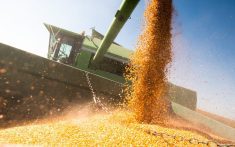CNS Canada — Cheap prices for feed and a softer Canadian dollar have helped keep Canadian hog prices aloft so far in 2017.
“Right now producers are looking at $180 to $184 a pig,” said Andrew Dickson, general manger of Manitoba Pork. “Prices are looking pretty good for June, July, August.”
By July, he said, some producers could be seeing $200 per animal, which he described as strong overall and similar to 2016 values.
“The previous year, March of 2015, you were looking at July prices of $166 to $171,” he said.
Read Also

Bring focused approach to target systems, not producers says animal activist
Darren Vanstone explains the process of reframing animal agriculture through advocacy and activism at the Human Canada One Health One Welfare Conference.
He estimated 60 per cent of the cost of raising a pig is in feeding it, so the low cost of corn and other feed this season has been one of the main drivers in the market.
Producers won’t necessarily be able to use the crop that was left on the field last fall, he cautioned.
A few million tonnes of grains and other crops are waiting to be harvested during the spring. Many expect much of that grain to wind up in Prairie feed bins, but Dickson said it’s not that simple.
“We can’t use (grain with) high fusarium levels in pigs; it’s an appetite suppressor,” he said. “That’s the last thing you want in a pig.”
Right now many producers on the Prairies are trucking weanling pigs into the U.S. for finishing.
“They’re selling them to American farmers who use their own soymeal and corn. The big thing for corn growers is they love the manure,” he said.
Dickson said he has heard some comments that the manure is giving producers a 10 per cent yield boost, which exceeds most fertilizers. By that metric, it’s a win-win for both sides.
“If you’re in Iowa and you’re growing a crop and you get a 10 per cent increase, that’s roughly 20 bushels an acre,” he said.
Spring flooding in Manitoba, however, could gum up the works for producers near rivers in that province.
“There are lots of pork operations near the Red River,” Dickson said, but is confident those producers will be able to protect their operations.
“We’ve had floods in the valley since the 1970s,” he said. “Guys have built up berms around their operations and storage facilities; they’ve figured out how to cope with this.”
— Dave Sims writes for Commodity News Service Canada, a Winnipeg company specializing in grain and commodity market reporting.
















